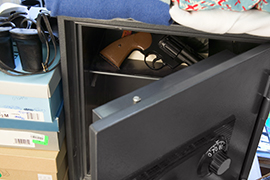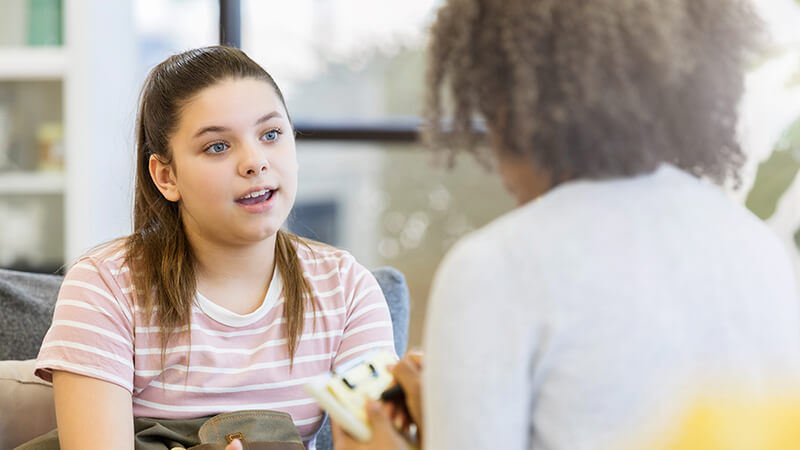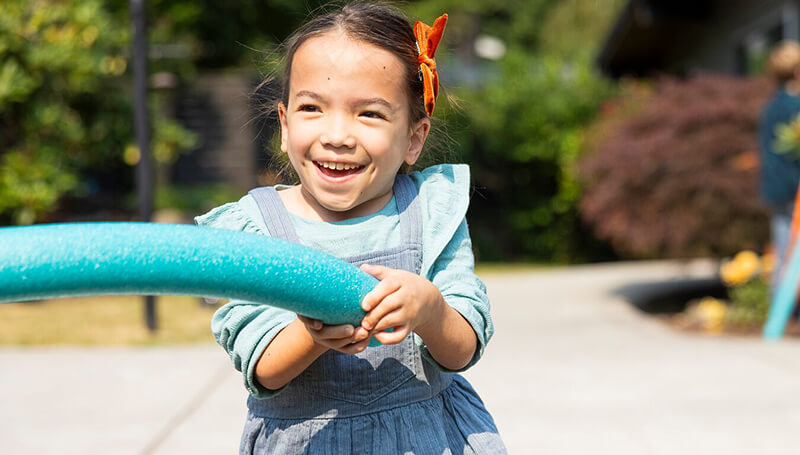Firearms in the Home
 You can download this article as a PDF (English, Spanish, Russian, Somali).
You can download this article as a PDF (English, Spanish, Russian, Somali).
One out of every three homes with children in the U.S. has a firearm. Many of these firearms are kept unlocked or loaded.
Children and teens are at the greatest risk of unintentional deaths, injuries and suicides from firearms. Young children are naturally curious. They explore in drawers, cabinets and closets. Some older children and teens are attracted to firearms and see them as signs of power.
Each year in Washington State, about 70 deaths of children and teens involve a firearm. Most of these shootings occur in or around the home.
Should I talk to my child about firearms?
Yes! It’s better to talk about it before your child or teen comes across a firearm at home or somewhere else.
- Talk with your child about the risk of firearm injury in places they may visit or play.
- Explain that real firearms can kill or seriously injure people, unlike toy firearms or firearms shown on TV, in movies or in video games.
- Teach your child that if they find a firearm they should leave it alone, leave the room and tell an adult right away. While this training seems to work for some children, it doesn’t work for others. The only guarantee of safety is to lock up firearms.
- Teach your child to tell an adult right away if they see a firearm in someone’s backpack at school or if they hear someone is going to bring a firearm to school.
- Talk with your child about firearms and violence. Let them know that strong feelings like fear and anger can be expressed without using weapons.
How do I store a firearm safely?
Store firearms in a safe or lockbox with the ammunition stored separately to protect everyone in the home. This is called “triple safe” storage. Safe firearm storage also prevents theft of firearms. Use this checklist:
- Store firearms unloaded, locked in a firearm safe or lock box, and the ammunition stored and locked separately. Simply storing firearms out of sight is not safe.
- Use trigger locks or cable locks on all unloaded firearms, even when they are locked up in a safe.
- Use locking devices that use combination locks rather than keyed locks. Children often know where keys are kept.
- Ask family and friends to use these safe storage steps.
- Always lock up firearms, even if a child or teen has had safety training.
- Temporarily remove firearms from your home if a family member is depressed, suicidal or abusing drugs or alcohol.
Where can I buy a safe storage device?
You can buy a safe firearm storage device online or at a sporting goods store, firing range or gun store. Decide what features are important to you and find a storage option that works best for your needs. No matter what device you choose, make sure that it meets the California Department of Justice’s safety standards.
How can I help keep my child safe at other homes?
Parents ask all sorts of questions before their children visit other homes, such as questions about booster seat and seat belt use, allergies and animals. Add firearm safety to the conversation. Ask if firearms in the home are stored unloaded and locked. Ask if the ammunition is stored separately. Ask about shotguns and rifles, too, not just handguns.
If you have doubts about the safety of someone else’s home, invite the children to play at your home instead.
How do I ask others about safe firearm storage?
Many of us feel awkward asking other people how they handle firearm safety. Research shows that 93% of parents, including parents who choose to own firearms, would be comfortable with being asked about a firearm in their home. You can share your own family rules or practices as a way to start the conversation. Just present your concerns with respect, and consider using some of these words if you don’t know where to start:
- “Knowing how curious my child can be, I hope you don’t mind me asking if you have a firearm in your home and if it is properly stored…”
- “Mom, Dad, _________, this is awkward for me and I mean no disrespect. I am concerned Susie will find one of the firearms in your home when we visit. Do you keep them locked up with the ammunition stored separately?”
Consider sharing information on safe firearm storage with your child’s preschool, childcare or local PTA. The resources in the “To Learn More” section can help you get started.
To Learn More
- Seattle Children’s Safe Firearm Storage Program
- LockItUp.org
- Firearm Safety Devices Certified for Sale
- Safe Firearm Storage
- ASK
- Your child's healthcare provider
Suicide Prevention Resources
- Suicide Prevention
- Forefront Suicide Prevention
- Pacific Northwest Suicide Resource Center
- Crisis Connections
Contact Us
To contact the Safe Firearm Storage Program at Seattle Children’s, please call 206-987-4653 or send an email.

